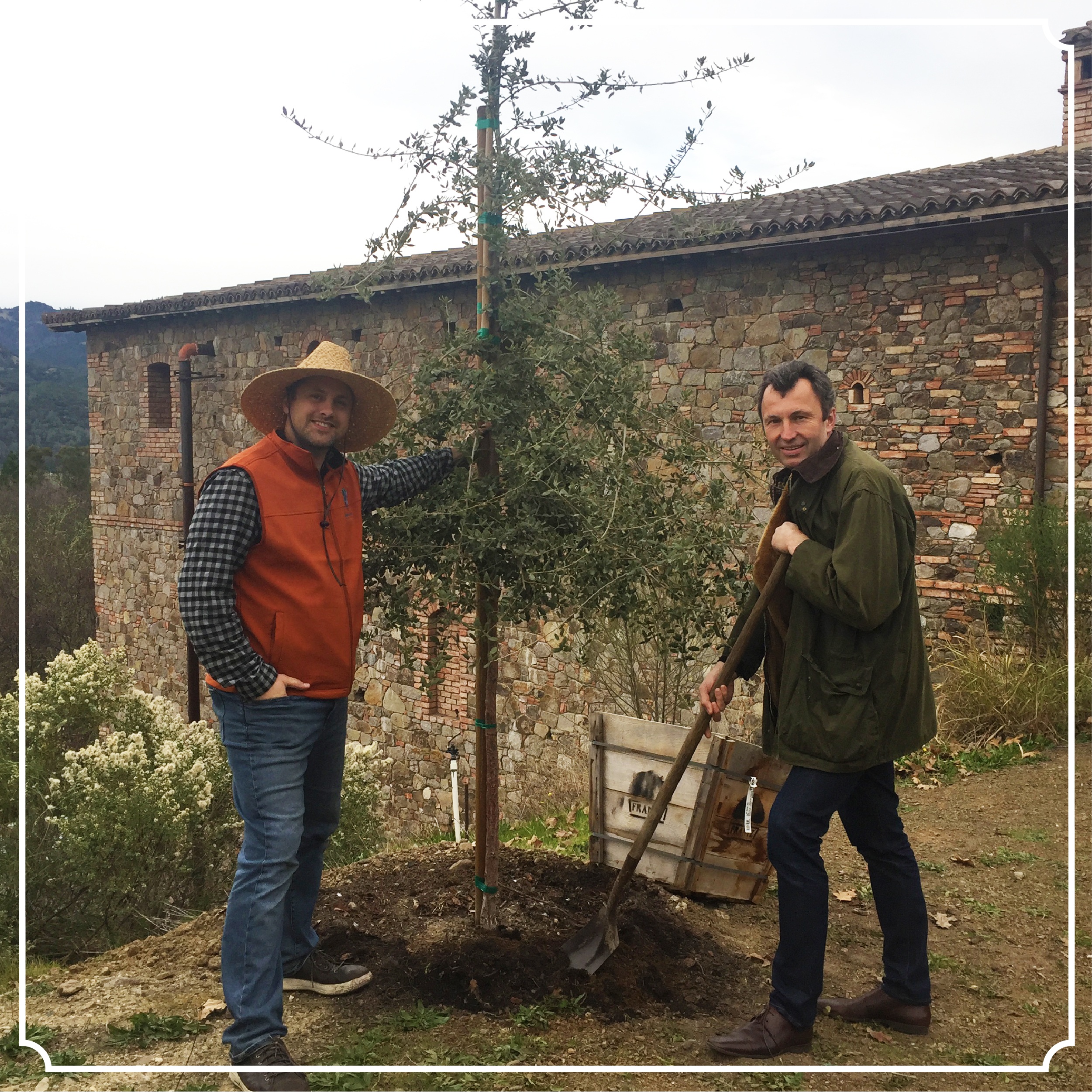Our First Cork Tree At The Castello

Our First Cork Tree at the Castello

This January, Castello President Georg Salzner and Winemaker Peter Velleno planted our first cork tree. Native to southwestern Europe, the Quercus suber cork oak tree can grow up to 100 feet tall, and is sure to thrive in the Mediterranean climate we enjoy here in Napa Valley. Wine Corks are made from the bark of the cork tree, which needs to be stripped and peeled off by hand. Cork trees are typically harvested every seven years, and are a renewable resource since the tree is not cut down and only the outer layer of bark is removed. It takes a cork tree 25 years to reach maturity before its bark can be harvested, and we are looking forward to our first Castello cork harvest in 2042!

Corkage Fees and BYOB – Part 1

Mary Davidek
Corkage Fees and BYOB – Part 1
BYOB = Bring Your Own Bottle
Corkage Fee = the fee charged to open and serve a bottle of wine not purchased at the dining establishment
Every restaurant has restrictions and specifications which are said to cover the cost of opening a bottle, providing stemware, and serving the wine. Realistically, a corkage fee is charged to cover lost revenue. I am unabashedly a self-professed BYOB junkie; a dedicated corkage hound ……and I go to extremes in my pursuit. Here are a few situations I have encountered and simple resolutions which may help in your quest.
1. Call the restaurant or check their website prior to your reservation as fees and restrictions vary. Some restaurants may impose a 1-bottle limit and others may have more tempting ways to capture your attention. A growing trend; restaurants charge a fee but will comp it one for one, for every bottle purchased. For example, restaurant “X” charged $25 corkage. I brought in a bottle of Castello di Amorosa Cabernet Sauvignon. From the restaurant wine list I selected a bottle of Sauvignon Blanc to enjoy with apps. I love a zippy Sauvignon Blanc with bruschetta and goat cheese on a warm baguette; sublime. The bottle I purchased was $28. That’s right, the corkage fee for my Castello di Amorosa bottle was waived. This is clearly a win-win. Typically I bring in a red and purchase a white from the list as even the grandest wine menu offers a tasty and affordable white wine.
2. A common and reasonable request; the bottle you bring in cannot be available for purchase on the existing wine list. To ensure your selection for carry-in is acceptable, browse the wine list on-line or request a fax or emailed copy prior to your planned visit. Here is my fool-proof solution. Bring in wine from a winery that does not distribute. This is becoming easier as more small and mid-sized wineries are opting for direct-to –consumer sales only. Castello di Amorosa wines have been a fixture on my restaurant outings for this very reason. Restaurant wine lists change weekly and this takes the guess work out of it.
3. Prepare your bottles. If you want a chilled bottle of bubbly with your Dungeness crab; chill it. If you are bringing a Napa Cab with a little age on it, stand it up for a few hours prior to leaving which allows sediment to collect at the bottom.
4. I have seen bottles transported in everything from a paper shopping tote to a plastic grocery bag. My advice; invest in a respectable wine carrier. From leather totes to canvas carrying bags to decorative wine boxes – your wine should travel in style.
Good news for us food and wine lovers, corkage and BYOB is becoming an accepted standard. Restaurant owners are adopting more favorable corkage policies as a marketing tool.
Stay tuned……Part 2 coming up.
Cheers!
Mary Davidek C. S. , C.S.W.



